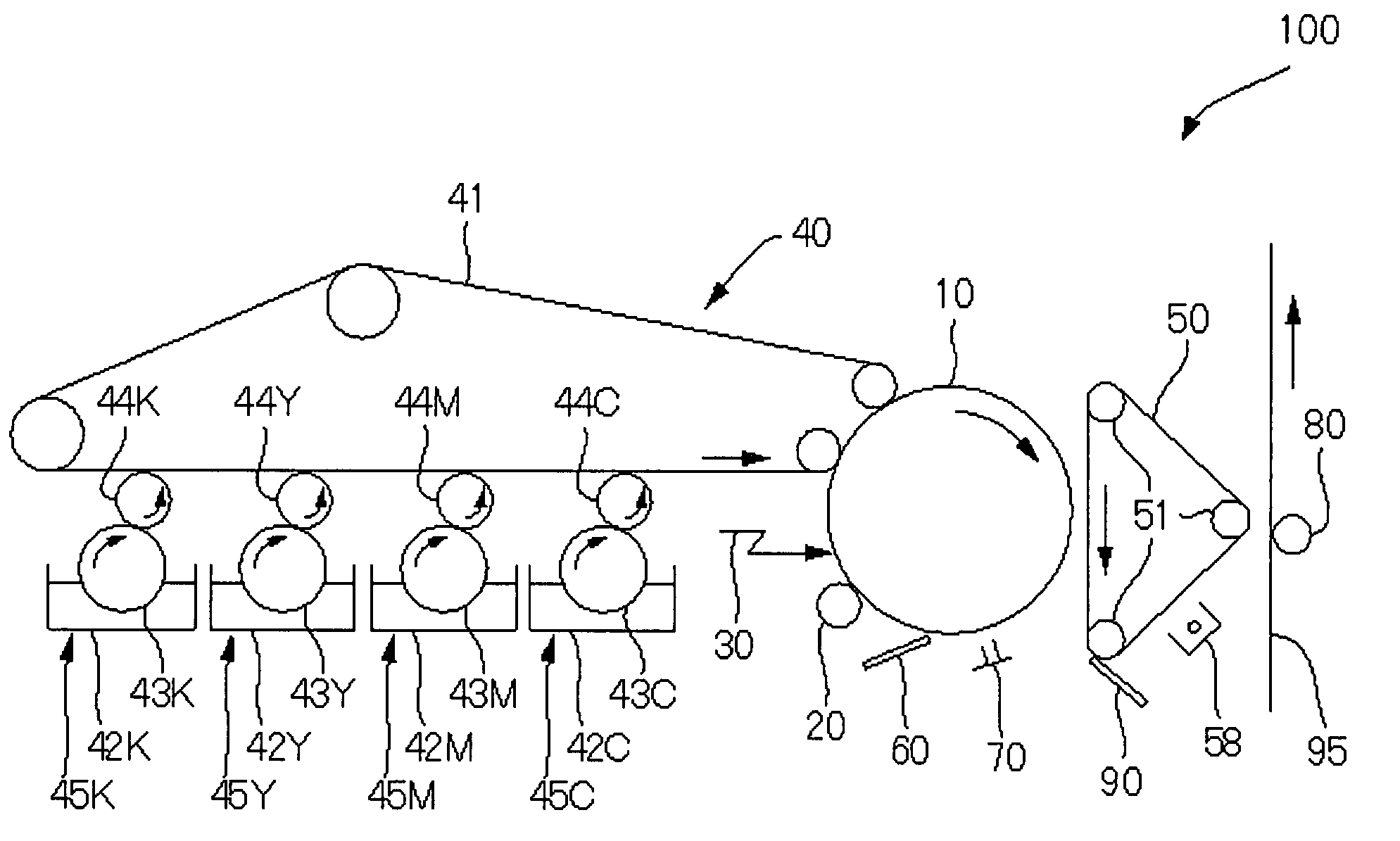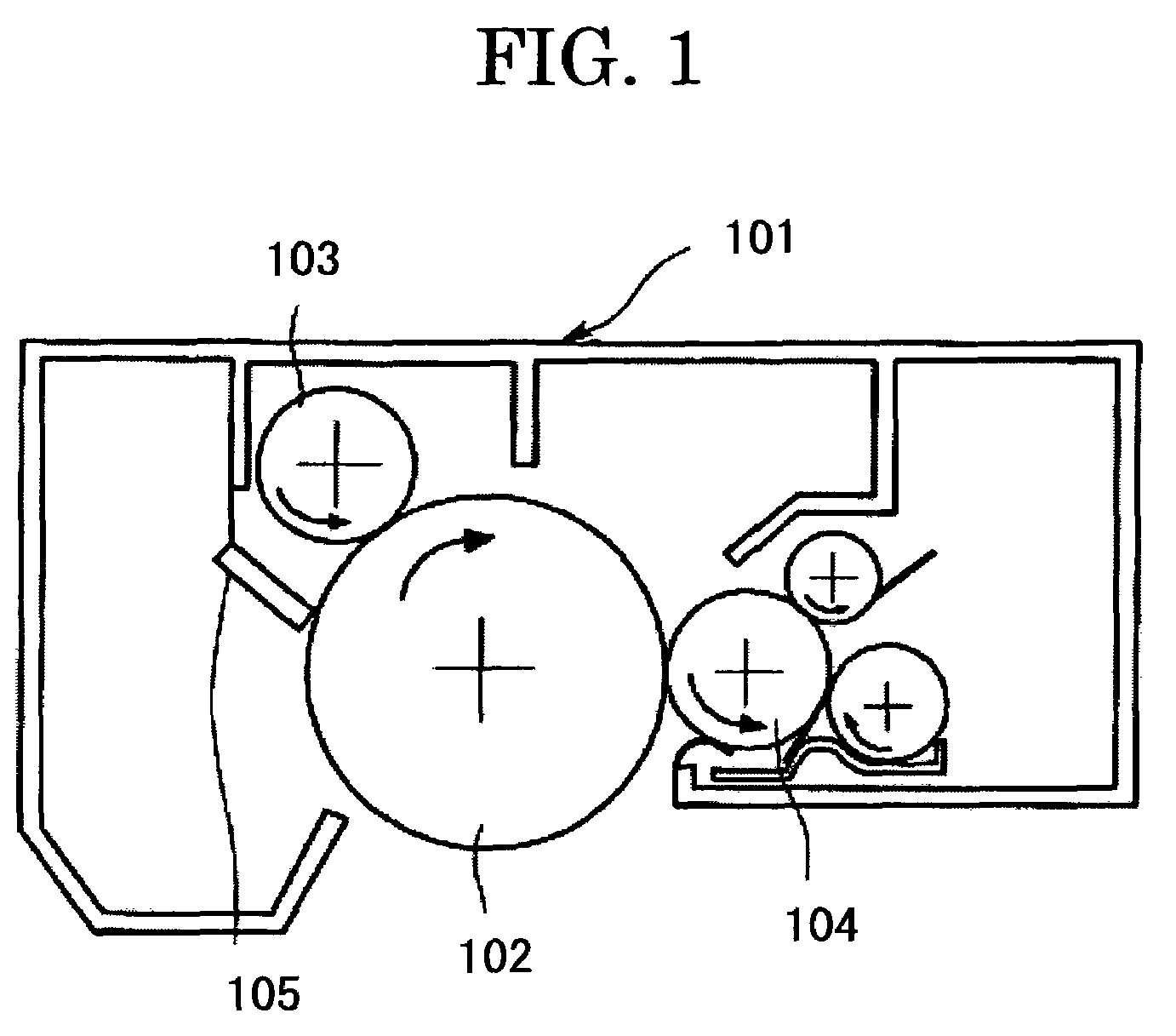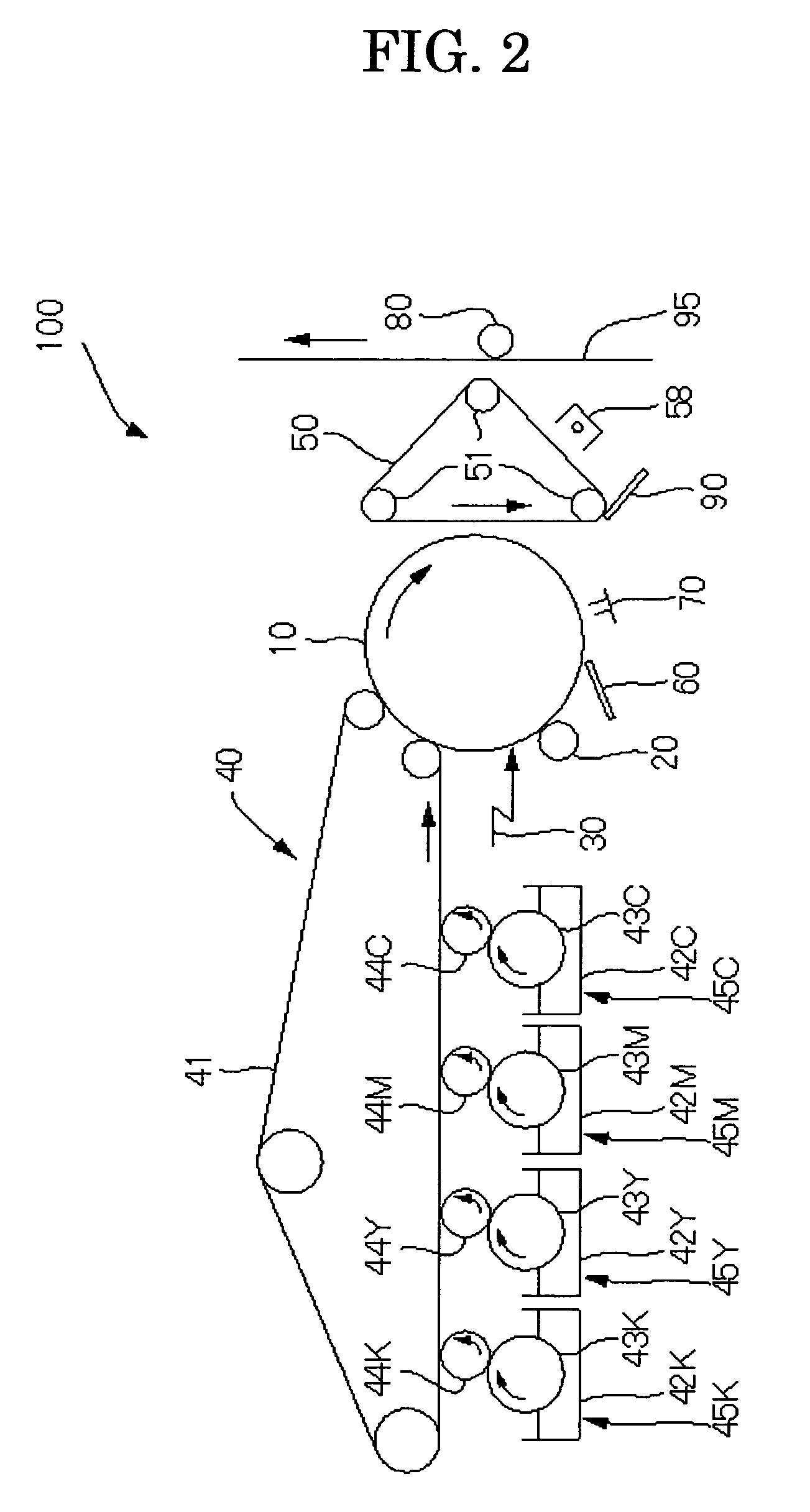Toner, and, developer, toner container, process cartridge, image forming apparatus and image forming method
a technology of toner container and developer, which is applied in the direction of electrographic process, electrographic process apparatus, instruments, etc., can solve the problems of high cost, ineffectiveness, and difficulty in uniform dispersing of additives such as colorants, and achieves excellent flowability, transferability, and anti-heat preservability. , the effect of preventing the blockage of the hea
- Summary
- Abstract
- Description
- Claims
- Application Information
AI Technical Summary
Benefits of technology
Problems solved by technology
Method used
Image
Examples
example a-1
-Synthesis of Organic Partide Emulsion-
[0525]To a reaction vessel provided with stirrer and thermometer, 683 parts of water, 11 parts of sodium salt of sulfuric acid ester of methacrylic acid ethylene oxide adduct (ELEMINOL RS-30 by Sanyo Chemical Industries, Ltd.), 83 parts of styrene, 83 parts of methacrylic acid, 110 parts of butyl acrylate and 1 part of ammonium persulphate were introduced, and stirred at 400 rpm for 15 minutes to give a white emulsion. This was heated, the temperature in the system was raised to 75° C. and the reaction was performed for 5 hours. Next, 30 parts of an aqueous solution of 1% ammonium persulphate was added, and the reaction mixture was matured at 75° C. for 5 hours to obtain an aqueous dispersion of a vinyl resin (copolymer of styrene-methacrylic acid-butyl acrylate-sodium salt of sulfuric acid ester of methacrylic acid ethylene oxide adduct). This is referred to as “particle dispersion 1”.
[0526]The volume average particle diameter of particles con...
example a-2
[0553]“toner 2” was produced in the same way as in Example A-1, except that, in Example A-1, “low molecular mass polyester 1” was changed to “low molecular mass polyester 2” having characteristics shown in Table 1.
[0554]For the obtained toner, characteristics of toner were measured in the same way as in ExampleA-1. Results are shown in Table 2.
example a-3
[0561]“toner 6” was produced in the same way as in Example A-1, except that, in Example A-1,“low molecular mass polyester 1” was changed to “low molecular mass polyester 4” having characteristics shown in Table 1.
[0562]For the obtained toner, characteristics of toner were measured in the same way as in Example A-1. Results are shown in Table 2.
PUM
| Property | Measurement | Unit |
|---|---|---|
| Tg | aaaaa | aaaaa |
| volume average particle diameter | aaaaa | aaaaa |
| acid value | aaaaa | aaaaa |
Abstract
Description
Claims
Application Information
 Login to View More
Login to View More - R&D
- Intellectual Property
- Life Sciences
- Materials
- Tech Scout
- Unparalleled Data Quality
- Higher Quality Content
- 60% Fewer Hallucinations
Browse by: Latest US Patents, China's latest patents, Technical Efficacy Thesaurus, Application Domain, Technology Topic, Popular Technical Reports.
© 2025 PatSnap. All rights reserved.Legal|Privacy policy|Modern Slavery Act Transparency Statement|Sitemap|About US| Contact US: help@patsnap.com



